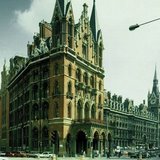
London is my favorite city. And I'm neither English nor do I have a drop of English blood. I think it's reading that did it. My first trip abroad was as a student where we went to study a language (so England was NOT an option). I spent only 4 days in London on the way home from Bonn. I handed over 10 pennies somewhere where the fee was one shilling. The hand held out didn't withdraw; the face glared and I eventually remembered it was 12 pennies to a shilling (this was 1961).
I remember walking along Cheyne Walk past the house where George Eliot lived (for a short time) to the locale of Thomas More's house on the river. Looked at poet's corner in
Westminster Abbey . We stayed in a Bloomsbury B&B and I remember the old Euston station with the huge
old arched entrance—scroll down the right to see a picture] which was replaced shortly after that, igniting a serious movement to refurbish instead of tear down historic structures. I also remember St. Pancras Station nearby (see photo) which has been cleaned of its black London smoke since them. But I didn't see enough. Needless to say I didn't want to go home.
When my sister lived in England in the 70ies I returned and saw much more. Did the British Museum and the V&A and sat quietly in a dark train stopped between stations in the tube—evidently while someone investigated a possible IRA bomb.
Many years later I had a job where I traveled to London 5 or 6 times a year and I began to take mini-vacations where stay on a weekend along and explore. I read one of those books that catalogued London locales in mystery books—and then read every book mentioned. I met a guy who ran a small "London Walk" business—did all the tours himself. He lived in the same suburb where my company had an office. Over the years I went on every tour—and some with other companies. I took a few trips to satisfy my childhood fascination with Elizabeth I (to Hatfield House where she spent some house arrest during her sister's reign and to Hampton Court) but most of my energy was spent on two other projects (1) walking where Dickens had walked and seeing the London that he knew—because lots of it is still there, like the
last galleried coaching inn off Southwark High Street, and (2) understanding the Blitz of 1940-41—where the damage was, what replaced what, etc. One weird highlight was only tangentially related to Dickens. Remember Charles Palliser?
The Quincrux? I'd just read it and went to find the house that features prominently. It was supposed to be near the intersection of Davies and Brook St. in Mayfair. The brook (there was one then) flowed behind it. I got to the corner and discovered Claridges on the right (and detoured to see that famous hotel—I associate it with Miss Marple) but knew I had to turn left. The corner was commercial buildings of no great age. Then came an alley and the first house beyond that was old and as I stared at it I realized that it was surely the house the author used as a model because there was a scene where the heroes escape from the house and one impales his leg on the iron fence. This house had an impressive iron fence with pointed arrow-like tips!
A new fascination was The East End. I hate to admit it but my interest stemmed from that soap opera that US public television peddles as high brow culture. The history also interested me: the docks—belonging to the East India and West India companies and the Tobacco Dock which had just been turned into a shopping center. The
walking tunnel from Island Gardens to Greenwich. I learned about the dominance of Jewish emigrants from Eastern Europe in the East End and visited their landmarks, soup kitchens and old schools and the synagogue on Bevis Marks. I learned about the Huguenot
silk weavers who fled France in the 18th century and built houses with weaving rooms on the top floor where they're always be light—all still there on Fournier Street.
I read Jack London’s
People of the Abyss. London went to London in 1902 to report on the coronation of Edward VII and decided he wanted to visit the famously treacherous “East End”. No one he approached had ever been there. A taxi driver refused to take him. He went to Cook’s—the travel people—who told him they could arrange a trip down the Nile or a safari to Africa, but not a trip to the East End. Eventually he went himself. He rented a room outside the area, shopped in second-hand stores for appropriate clothing, left the trappings of his own life in the rented room and entered the East End, passing himself off as a down-and-out American sailor. He even spent time in a poor house.
My passion for the architect Hawksmoor started with Peter Ackroyd's novel by that name and then I had to visit all the
Hawksmoor churches, starting with the most famous of which, Christchurch, Spitalfields, in the East End featured in the novel. St. Anne's Limehouse (the old "Chinatown") is also in the East End. I finally saw the last of the six in London, St. Alphege in Greenich, when my husband and I spent New Year's 2002 in London. (Fans of Evelyn Waugh’s
Brideshead Revisited might like to know that Hawksmoor designed the façade of Castle Howard in Yorkshire—where Brideshead was filmed.)
Eventually I discovered Sanford's on Long Acre. A map store. I'd already discovered the Ordnance Survey maps—old ones from the late 19th and early 20th century—reproductions. I'd bought about 20 of them and poured over them, matching old locations with what the space looked like today. I could have spend hundreds at Sanford's but bought only a The A to Z of Victorian London, one of the a series of historical guide books (I eventually bought the Elizabethan one too.) The book even has a directory so you can trace what business occupied what space.
Another fascination I discovered in London was the Roman Heritage. The Barbican Centre is built on a section of London that was completely wiped out in the Blitz of WWII. But sections of the Roman Wall remain and you can walk the walls of the Barbican and see it clearly. Ackroyd in his
London: A Biography gives you directions to follow the wall along its entire length. I'd like to do that some day. I wasn't surprised to find the bricks flatter than modern ones—I'd already see lots of Roman bricks in Colchester where my sister lived. There are more roman remains in London than you probably think—found an old townhouse built over a Roman bath one day on one of the streets leading off The Strand toward the river. I got more interested in the Roman heritage after I'd read Edward Rutherford's
London—which follows a series of related characters through a thousand years of history.
My best Roman London experience came one cold February night. It was about 9PM on a Sunday. I came out of a theatre on The Strand and decided to walk east and get a tube back to my Bloomsbury hotel from somewhere along the way. No one was around. I kept walking. Into Fleet Street with all its Dickens reminders, past
Gough Square where you can visit the house where Dr. Johnson wrote his dictionary. It started to rain. I saw a lighted archway ahead and a bus stop. I saw a woman run out and jump on a bus. I was too far away to catch it. I hurried to the archway, looked in and realized it was
St. Brides—"the wedding cake church—supposedly some baker took its spire as an inspiration for what became the traditional wedding cake—tall and tiered. All the lights were on and I heard a choir practicing. I went in and saw a sign that said "To the Crypts". And followed it to the cellar. There were museum cases and large explanatory posters that told the history of the parish from the pre-Roman Britain to the present. One case had charred wood scraps from both the Great Fire of 1666 and that of 1940.
What happened at St. Bride's was this: it was bombed but not totally destroyed, burned out, destroying what some people thought hideous Victorian wood interiors. But when it was restored in the 60ies archeologists found that it was built on the site of a Roman temple. They also found a medieval chapel where the young men would have kept vigil before being knighted. The renovation preserved one of the excavation holes, glassed it in and inserted convex mirrors so the viewer can see the colorful Roman tile floor beneath. It's eerie—or was that night when I stayed—alone—an hour or more, keeping my ear peeled for activity upstairs so I wouldn't get locked in.
Later I discovered
The Museum of London (in the Barbican complex) that told the whole story of archeological work undertaken before rebuilding after the war. One memorable exhibit shows a cross section of the earth—a literal picture of digging down into the past—broken tile from the Romans, garbage from Henry VIII’s time, cinders from the Great Fire. After that I visited the museum regularly, to see new exhibits and check out the bookstore for new history of London books.

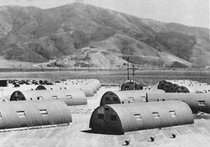 maybe he’d have found a more sophisticated color combination for which I’d have gladly abandoned my blue one.
maybe he’d have found a more sophisticated color combination for which I’d have gladly abandoned my blue one.

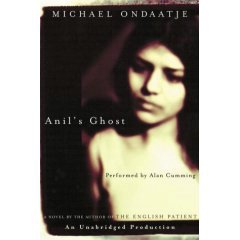 It took me a long time to read this book. I started out with a recorded version but keep getting lost in the text. There were switches in time that didn’t make sense. I couldn’t remember character and place names or sort out a time line to say nothing of a plot. So I went to the used book store and got the book. Then I could see the problem. The book has no chapters per se. There are named sections, but within that frame the text comes in bursts of 2 to 6 or 7 pages focusing on one episode. The bursts of tex move around in time and place. Just seeing where the breaks were—which was impossible in the recorded version—made the book infinitely easier to read.
It took me a long time to read this book. I started out with a recorded version but keep getting lost in the text. There were switches in time that didn’t make sense. I couldn’t remember character and place names or sort out a time line to say nothing of a plot. So I went to the used book store and got the book. Then I could see the problem. The book has no chapters per se. There are named sections, but within that frame the text comes in bursts of 2 to 6 or 7 pages focusing on one episode. The bursts of tex move around in time and place. Just seeing where the breaks were—which was impossible in the recorded version—made the book infinitely easier to read.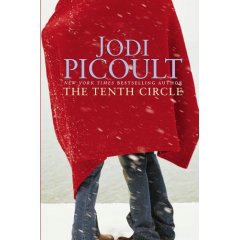

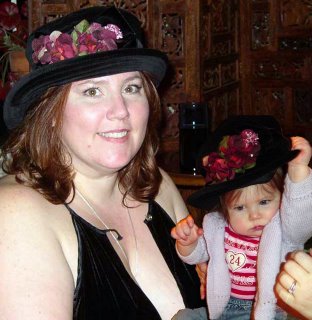 a great creator of trick photography. I'm not even sure if the proportionate sizes are right, but I couldn't resist trying this when I got a a picture of Isadora trying on "the hat".
a great creator of trick photography. I'm not even sure if the proportionate sizes are right, but I couldn't resist trying this when I got a a picture of Isadora trying on "the hat".  ms than all summer. A dry winter does more for it than the special bougainvillea fertilizer I used that was supposed to make more blooms. The bougainvillea blooms best when its under stress—especially when it’s excessively dry. It looked spectacular the summer we had a drought and then in Phoenix a couple of years ago, I decided that was the ideal climate for it.
ms than all summer. A dry winter does more for it than the special bougainvillea fertilizer I used that was supposed to make more blooms. The bougainvillea blooms best when its under stress—especially when it’s excessively dry. It looked spectacular the summer we had a drought and then in Phoenix a couple of years ago, I decided that was the ideal climate for it.
